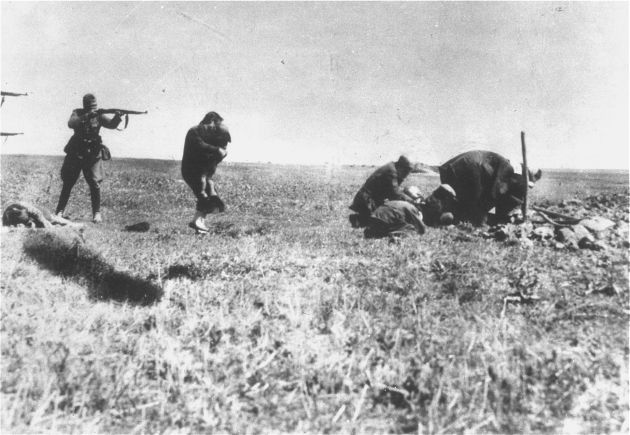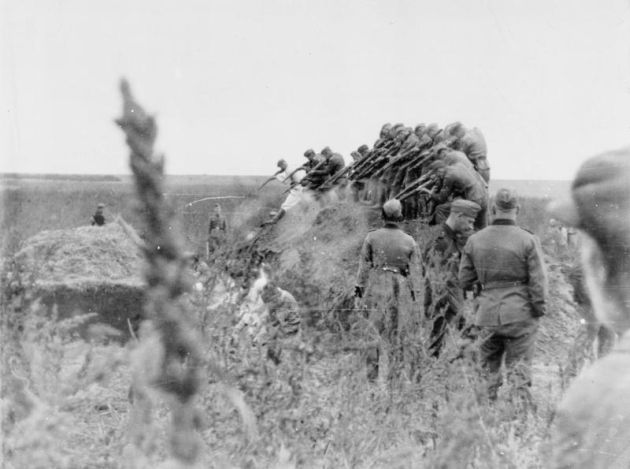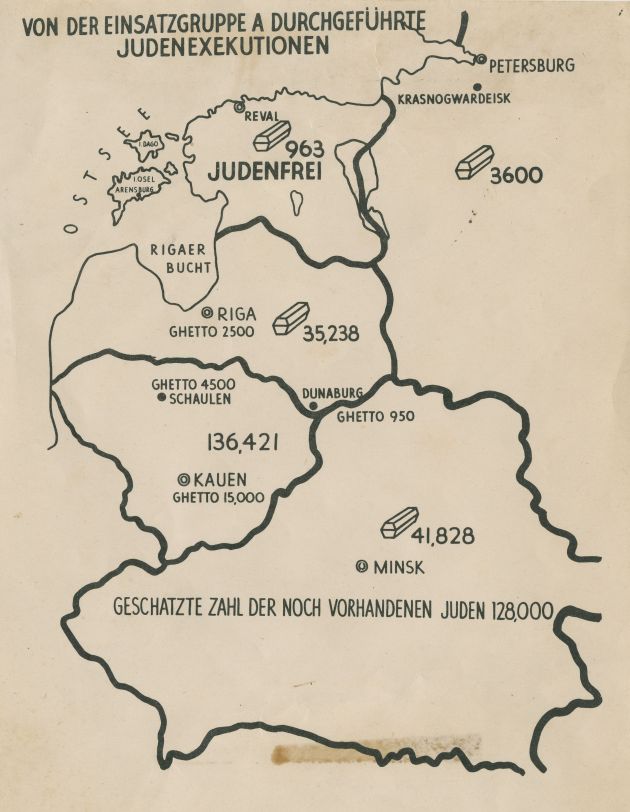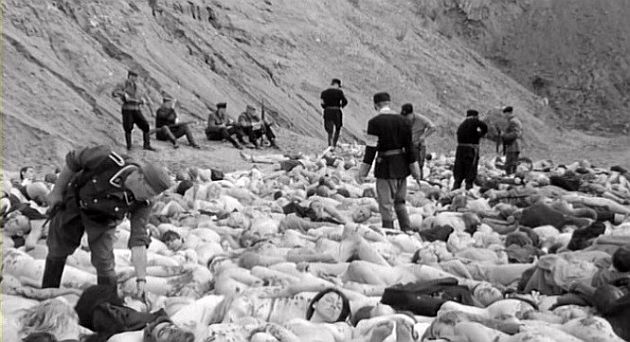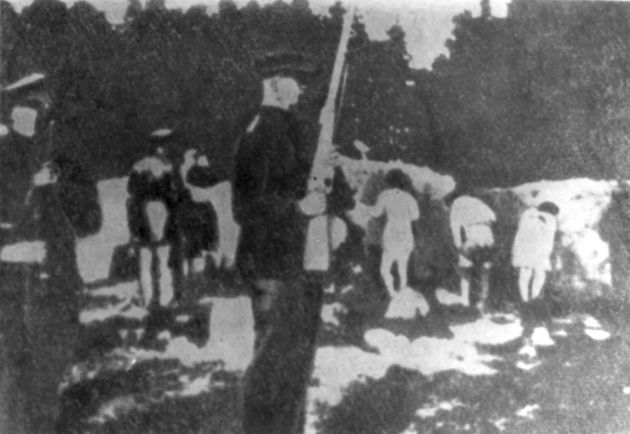Shortly before the German invasion of the Soviet Union, the Einsatzgruppen were divided into four detachments (A, B, C and D). They were destined to operate behind particular German Army Groups and assigned to liquidate enemies of the Reich including not only communists, but also Jews and Roma. The largest formation was Einsatzgruppe A, with approx. 1,000 functionaries operating in the Baltic States (Lithuania, Latvia and Estonia). Einsatzgruppe B was active behind the Army Group Centre, i.e. Belarus and the Smolensk region. The remaining two groups, C and D, operated behind the southern front, including central and northern Ukraine, as well as Crimea and the Caucasus.
The Einsatzgruppen usually shot Jews in the direct whereabouts of their households. Before the executions they frequently ordered the victims to dig their own mass graves, where the bodies were buried afterwards. The Einsatzgruppen often deployed police battalions with members recruited from the Order Police in Germany. One of them was Reserve Police Battalion 101, formed in Hamburg and launched in occupied Poland in 1939. Towards the end of June 1942, the Battalion was transferred to the southern part of the Lublin district to participate in deportations of Jews to Treblinka. They also carried out local executions of Jews.
The largest mass murders of Jews occurred in Ponary near Vilnius (approx. 65,000), Babi Yar near Kiev (over 33,000) and the Ninth Fort near Kaunas (30,000). Another 38,000 Jews were murdered over a period from 29 November to 8 December 1941 in Rumbula Forest near Riga, Latvia. In the last case the victims were the inhabitants of the Riga ghetto as well as Jews transported from Germany, Austria, Bohemia and Moravia. It has been estimated that in total the Einsatzgruppen murdered approx. 1,250,000 Jews in the Baltic States, Belarus and Ukraine.

